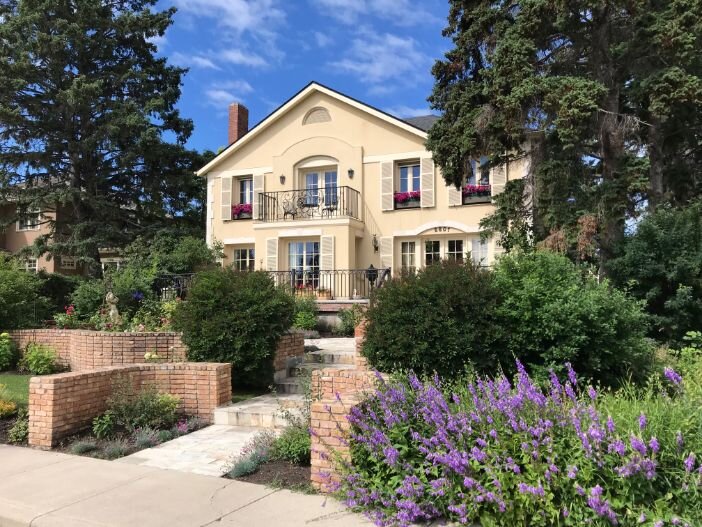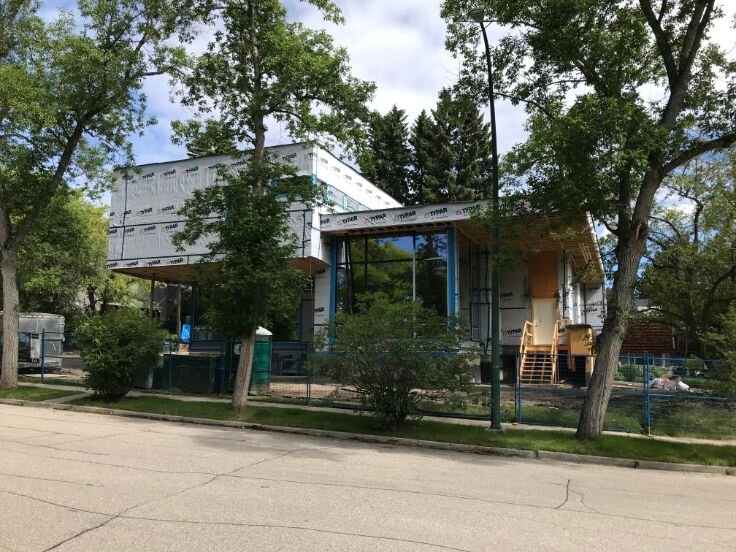Staycation Tip #3 Explore Your City’s Historic Neighbourhoods
Yes, I do try to practice what I preach! While many Calgarians head to the mountains to hike, bike, climb and dine I prefer to stay in the City and discover the charms of Calgary’s 200+ neighbourhoods. I especially love the older communities with their decades of aging and unique personalities.
In fact, just this past week I explored two of Calgary’s oldest communities – Mount Royal and Sunnyside – both developed early in the 20th century when Calgary’s population was only 43,704 (1911). FYI: In 1911, London’s population was 46,300, Hamilton’s was 81,969, Vancouver’s was 120,847 and Winnipeg’s was 136,035.
My how Canadian cities have changed!
Link: Staycation: 15 tips on how to be a tourist in your city
Sunnyside Charm
Sunnyside, settled by homesteaders in the 1880s, was incorporated into the City of Calgary in 1904. Its charm today comes from the modest cottage homes that were primarily built for the laborers of the Eau Claire Sawmill, located on the other side of the Bow River where the Prince’s Island lagoon is now located. It was also home to many Canadian Pacific Railway workers, as the City’s street car system allowed them to get to and from the Ogden Yards easily.
FYI: Ogden Yards was the city’s major employment centre not downtown, early in the 20th century. Link: Ogden Yards History
While there are some funky, large two-storey late 20th and early 21st century infill homes, Sunnyside is still predominately, made up of small cottage homes on 25 foot wide lots along a gird-patterned street. Today, it is home to an eclectic mix of people - from executive families to artists to empty nesters. It is also home to the 3.3 acre, 66 unit Sunnyhill Housing Co-operative, formed in 1976, to provide quality, affordable housing in the city centre.
Flaneur the pedestrian friendly streets of Sunnyside to find funky, free libraries, beautiful front gardens and yard art, as well as the charm of early 20th century architecture.
Sunnyside Fun Front Yards Slideshow
Sunnyside Fun Cottages
Mount Royal
Mount Royal was originally known as American Hill, because of the large number of Americans who settled there. In 1910, It was renamed Mount Royal as the land was owned by the Canadian Pacific Railway (headquartered in Montreal) who wanted to redevelop it as Calgary’s most exclusive neighborhood. It worked. Mount Royal developed rapidly between 1904 and 1914, becoming home to Calgary’s most affluent citizens including Colonel James Macleod and the A.E. Cross family.
Link: Mount Royal History
Backstory:
Although there were only a handful of actual Americans living on the hill southwest of downtown, the name had become common usage early in the 20th century. Most Calgarians called the area American Hill and even the city directories listed it as such. CPR executives were forced to take matters in hand when the residents on the hill began naming the streets after Revolutionary War heroes. So in 1907 subdivision plans chose names reflecting Canada’s British heritage, such as Durham, Colborne, Carleton and Dorchester for street names. Many leading residents of Calgary, approached the CPR to give the new subdivision a name more fitting with Canada’s imperial allegiance. William Toole, head of Toole Peet and the agent for the CPR in Mount Royal, and future Prime Minister R.B. Bennett led the movement. Mount Royal was chosen in honour of William Van Horne, CPR president, who made his home in Montreal’s district of the same name.
Restrictive covenants were placed on the titles of the Mount Royal properties limiting development to single family dwellings and set minimum housing construction costs.
This resulted in the continuation of the exclusive character of Mount Royal into the 21st century.
And while in the early 1900s, Mount Royal was a treeless hill, (just like today’s new suburbs on the edge of all North American cities), now it boasts a lovely canopy of trees.
This makes walking its curved streets like a walk in a park, especially given the huge front gardens, some almost a large as a Sunnyside lot.
As I like to say, “don’t judge a community until the trees are taller than the houses.”
Speaking of parks, it seems like there are small parks every few blocks in Mount Royal. Strangely, we never saw have a children’s playground or playing field. The parks seemed very ornamental – look but don’t play!
We did find one very intriguing park – South Mount Royal Park – with a huge bronze statue. Turns out the statue is of James Wolfe, the victorious British General in the Battle of the Plains of Abraham at Quebec in 1759.
“What is this statue doing in Calgary” you ask?
Well, the statue stood for many years in front of the Astor Building on Lower Broadway in New York City, before it was purchased by Calgarian Eric Harvie for his private collection.
FYI: Harvie was a Calgary philanthropist and eclectic collector, perhaps best remembered as the founder of the Glenbow Museum and Devonian Gardens.
Harvie donated the statue to the City of Calgary in honour of Canada’s centennial in 1967. It was installed at the Calgary Centennial Planetarium until 2000, when it was removed for conservation and relocated to South Mount Royal Park.
The sculpture was created by J.M. Rhind (1860 – 1936) who created several iconic artworks including the King Memorial Fountain in Albany, New York (1893), the Grand Army of the Republic Memorial in Washington DC (1909) and George Washington monument in Newark, New Jersey (1914).
What is even stranger is that there are two statues of General Wolfe in Calgary! A second piece - titled “Wolf and Sparrows” - was installed in 2019 near the new 12th Street Bridge in Inglewood - but that is another story for another blog.
A Mount Royal walkabout is like a walk in a private park as our beautiful summer day found there are few people around. The reason for this is the community was created based on the City Beautiful principles, an architecture and urban planning movement that believed grand parks, boulevards and civic centres could promote harmonious social order enhancing the quality of life of the citizens by fostering civic pride and engagement.
With every home different, walking the streets is like walking through an architecture museum.
Mount Royal Architectural Slideshow
Last Word
While Canadian cites lack the centuries of history of those in other parts of the world, there is still lots of intriguing history to be found in your city if you take the time to wander the older neighborhoods. They are great places for a family walk or couple stroll.
Sunnyside and Mount Royal arguably demonstrate the extremes of urban living in Calgary in the early 20th century and even now in the early 21st century. Both offer an interesting mix of old and new homes, each offering their own unique charm.
If you like this blog, you will like these links:
Staycation: 15 tips on how to be a tourist in your city!




































